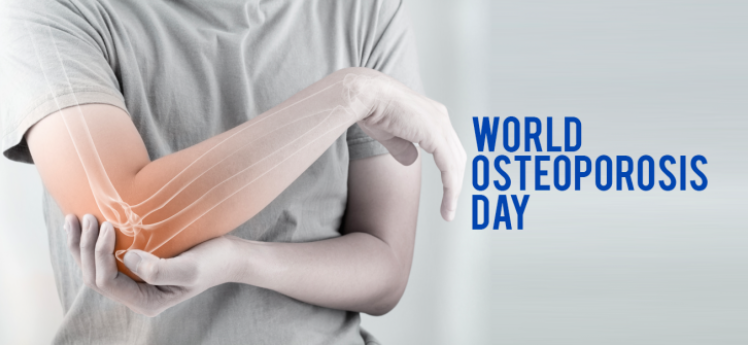World Osteoporosis Day
 What is Osteoporosis?
What is Osteoporosis?
Osteoporosis causes a decrease in the density of bone, decreasing its strength and resulting in fragile bones.
Osteoporosis makes your bones abnormally porous bone that is compressible, like a sponge. This disorder of the skeleton weakens the bone and results in frequent fractures in the bones.
Normal bone is composed of protein, collagen, and calcium, all of which give bone its strength. Bones that are affected by osteoporosis can break with relatively minor injuries that normally would not cause a bone to fracture. The spine, hips, ribs, and wrists are common areas of bone fractures from osteoporosis.
Common Osteoporosis Symptoms
Treating osteoporosis at the earliest is the best way to prevent some of the more serious consequences, such as loss of height or bone breakages. However, don’t know they have weak bones until they’ve broken their hip, spine, or wrist.
Here are a few signs or symptoms of Osteoporosis:
Loss of height. Fracture from a minor fall. Back or neck pain. Stooped posture or compression fracture.
What are the risk factors for osteoporosis?
Both men and women can get osteoporosis, but this condition is more common in women. Here are some common risk factors of Osteoporosis:
Older age. Having low testosterone in men. Having low oestrogen in women. Taking certain medications that decrease hormone levels. Smoking cigarettes. Having a family history of osteoporosis. Excessive alcohol intake. Low physical activity.
How do you treat osteoporosis?
Treatment for osteoporosis includes medications to help build bone mass. The medications often have hormonal influences, stimulating or acting like estrogen in the body to encourage bone growth.
How to Prevent Osteoporosis?
Having strong bones is one of the most important things to help prevent Osteoporosis:
1. Get enough Calcium.
You must strive to hit the daily intake recommendation:
1,000 mg for women 50 and younger. 1,200 mg for women 51 and older.
Foods high in calcium include milk and dairy products, soya beans, green leafy vegetables, nuts etc. Have a well-balanced diet and if required, take a supplement for calcium. Consult a nutritionist if required.
2. Don’t Forget Vitamin D
Vitamin D helps your body absorb calcium and use it to strengthen your bones. When your skin is exposed to sunlight, your liver and kidneys help make vitamin D. If required take supplements too.
3. Protein is important for Bone Health
Protein is in every cell in your body, including your bones. Studies have shown that eating protein helps increase bone mineral density.
4. Exercise regularly
Exercise helps stimulate the cells responsible for building bones. To promote bone health, try doing weight-bearing and resistance exercises 3 or 4 days a week.
Weight-bearing exercises focus on carrying the weight of your body against gravity. Walking is a great weight-bearing activity, as are running, dancing, aerobics, hiking and tennis. Resistance exercises use an opposing force, such as weights, an elastic band, or water, to strengthen your muscles and build bone. Having strong muscles and a good balance may also help you avoid falls or minimize injury.
5. Build healthy life habits
The choices you make, beginning as early as childhood, can affect your bone health in the future. To protect it, consider making the following adjustments to your lifestyle:
Quit smoking. Limit alcohol consumption. Maintain a healthy weight. Eat a well-balanced diet. Stay active.
Source: https://www.kokilabenhospital.com/blog/world-osteoporosis-day-2/









